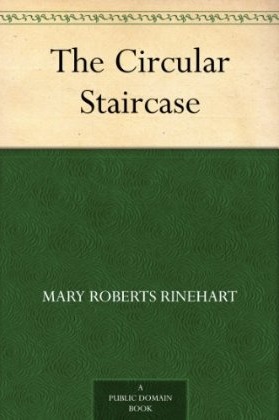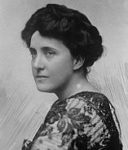 The Circular Staircase by Mary Roberts Rinehart
The Circular Staircase by Mary Roberts Rinehart Published by Amazon Digital Services on May 16, 2012 (first published 1908)
Source: Purchased
Genres: Classic, Mystery
Pages: 201
Format: eBook
Purchase at Bookshop.org or Purchase at Amazon
Add on Goodreads

Rachel Innes, a middle-aged spinster, has barely settled in at the country house she has rented for the summer when a series of bizarre and violent events threaten to perturb her normally unflappable nature. A strange figure appears briefly in the twilight outside a window. At night, a rattling, metallic sound reverberates through dark halls, and — most disconcerting of all — the body of a strange man is found lying in a pool of blood at the bottom of a circular staircase.
Before this spine-tingling tales ends, five connected deaths shatter the normally placid atmosphere of the vacation retreat. Rachel's devoted niece and nephew are among the prime suspects in one of the murders; stolen securities and a bank default threatens the young pair's financial security; and Aunt "Ray" ultimately fights for her life in an airless secret room.
The Circular Staircase is the first of Mary Roberts Rinehart’s novels I’ve read. I don’t know why it has taken me so long to get around to reading her.
The Circular Staircase is apparently the first example of the “Had-I-But-Known” school of mystery writing. The Had-I-But-Known mystery novel is one where the principal character (frequently female, in this case Rachel Innes) does things in connection with a crime that have the effect of prolonging the action of the novel. Ms. Innes keeps information from the police, does her own investigation, actively hides things the police should know – basically she’s a standard amateur detective. I take that back, she literally hides people, which is taking the whole thing a little far. Of course, she’s surrounded by people who are keeping secrets too, but they are suspects, so that’s expected.
So, Ms. Innes, her niece and nephew, and her maid move into a rented country house for the summer. The owners, a rich banker and his wife, are in California. Almost immediately, odd things start happening. There’s a mysterious person outside the window and odd tapping noises in the night. A few days later, a person is killed, found dead at the bottom of the staircase. And that’s just the beginning. We’ve got embezzled money, an heiress in hiding, and a missing nephew, in addition to the spooky noises and unexplained movements in the house. Liddy, the maid, is convinced the place is haunted.
Rachel Innes is a great character. She’s a middle-aged spinster who is smart, feisty, and independent. She ties all of the incidents together, even if she is not as entirely cooperative with the police as she should be. She wants to solve the mystery, indeed refuses to give up the house until her questions are answered, but she has people she needs to protect to. I also really enjoyed her relationship with Liddy. They bicker but you can tell how much they care about each other. The conversations with Liddy provide the bits of humor.
The book was written in 1908 and although bordering melodramatic at times, it’s a better read than a lot of current mysteries. It is racist at times, though, especially when it comes to the servants. I guess I tend to overlook that in older books, whether or not I should. It’s not terribly sexist though. Ms. Innes is tough and practical and her niece keeps a level-head for the most part too. Neither are fainting at any opportunity and Ms. Innes is certainly not waiting for a man to figure out the mystery, although they are nice to have around to watch the doors at night.

I’ve not read this author. Am making a note if this one.
She wrote a lot of books, but this one seems to be her most famous.
I know someone else who loves her work. I think I need to try one of her books.
I had heard good things about her books before picking this one up.
Melodramatic can be fun 😉
I agree!